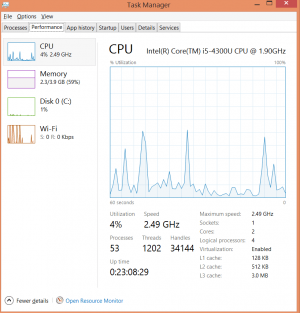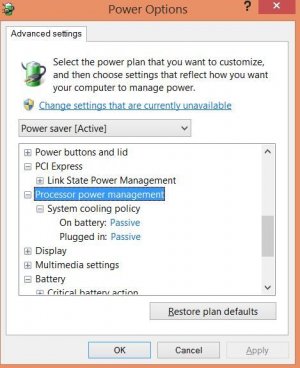Here we go again.
Was wondering why my battery life hasn't been so great lately (around 5:15 hours). Checked the Task Manager and my CPU seems to be pegged at max speed, 2.49 GHz. I went to check the minimum processor setting under the Advanced Power settings and guess what, there are no more settings for processor min & max. They've disappeared.
I'll do the powercfg.exe reset and see if that fixes it. Sigh.
Edit: still can't change the min/max in the control panel (though I've found the registry entry). CPU-Z says the processor IS being throttled down. So I guess it's Task Mgr that's messed up.


Was wondering why my battery life hasn't been so great lately (around 5:15 hours). Checked the Task Manager and my CPU seems to be pegged at max speed, 2.49 GHz. I went to check the minimum processor setting under the Advanced Power settings and guess what, there are no more settings for processor min & max. They've disappeared.
I'll do the powercfg.exe reset and see if that fixes it. Sigh.
Edit: still can't change the min/max in the control panel (though I've found the registry entry). CPU-Z says the processor IS being throttled down. So I guess it's Task Mgr that's messed up.


Last edited:
